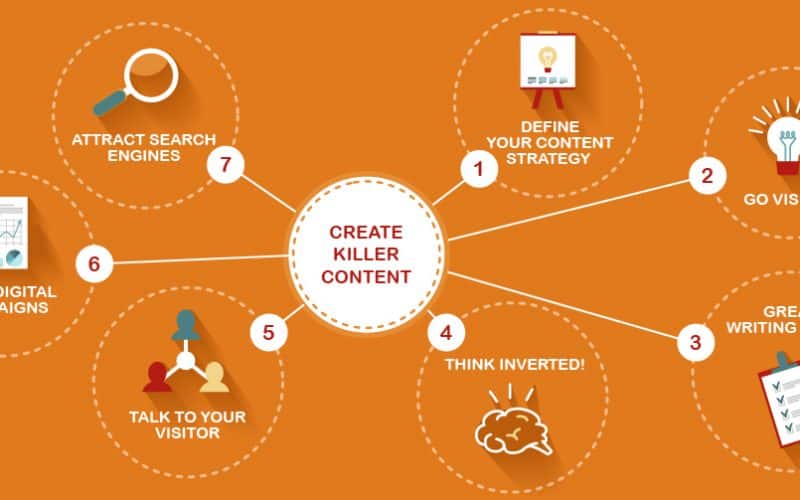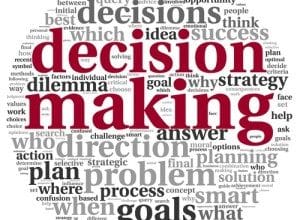By using many forms of material, including written information, audio, video, and photos, brands and people may connect with their audience through content marketing. However, the goal is to draw them in, hold their attention, and turn them into paying clients. A content marketing plan is a strategy for coming up with, producing, and disseminating material for content marketing. When you produce content and distribute it, all of this occurs. In this article, we’ll talk more about the content marketing plan framework, an example of a content marketing plan, and the plan for B2B content marketing.
This is the ideal time to adjust your content plan right away if you haven’t had a chance to do so or if you want to refine your present content marketing plan.
What is a Content Marketing Plan?
Planning, producing, disseminating, managing, and governing content are all parts of a content strategy. A strong content strategy will draw in and keep the attention of a target audience while also advancing commercial objectives.
Say that one of your business’s objectives is to raise brand recognition. To do this, you might employ an SEO-focused content strategy to improve the visibility of your website on search engine results pages (SERPs) and increase traffic to your goods and services.
Early on, new business owners believed that a content strategy was good to have but not essential. However, creating high-quality content can be quite helpful in winning over new customers and prospering over the long term.
In a buyer’s journey that adheres to the inbound marketing structure, a solid content strategy serves as the cornerstone for the Attract and Delight stages. You can use a content strategy to enable sales and increase customer happiness, in addition to drawing prospects to your brand.
Plus, developing a strong content strategy is essential if you want to compete in your business, as 70% of marketers are actively engaging in content marketing.
Content Marketing Plan Example
A content marketing strategy is a road map that outlines how content will successfully advertise your company’s name and its goods.
Here is an illustration of a content marketing strategy for the fictitious internet fitness company “FitZone”:
#1. Executive Summary
Give a quick summary of the content marketing strategy in this section, emphasizing the main goals and target market.
#2. Introduction
Describe the goal of the content marketing strategy and its significance in accomplishing the company’s objectives. Describe FitZone’s goods and services.
#3. Target Market
Describe the ideal FitZone customer in your own words. Describe your demographics, hobbies, problems, and internet activities.
#4. Content Objectives
Set forth precise content marketing objectives, such as enhancing engagement, boosting website traffic, generating leads, and raising brand exposure.
#5. Content Management
Describe the overall content strategy, including the material formats to be produced (blogs, videos, infographics, etc.), its tone and style, and how it complements FitZone’s brand identity.
#6. Content Schedule
Provide a content calendar with information on the subjects, formats, and publication dates for each piece of content. To keep the audience interested, make sure the frequency remains constant.
#7. Distribution of Content
Talk about the many distribution methods for the content, including FitZone’s blog, social networking sites, email newsletters, and guest posting options.
#8. SEO Techniques
Describe the search engine optimization (SEO) plan you used to increase the visibility of your content on search engines. Include plans for link-building, on-page SEO, and keyword research.
Describe how to use social media to promote content, interact with users, and create communities. Establish the publishing schedule and interaction strategies.
#10. Use of influencers
Describe, if applicable, the plan for working with fitness influencers to expand the audience for your content and establish credibility.
#11. Performance Measures
Determine key performance indicators (KPIs) to gauge the content marketing strategy’s effectiveness. These could include lead generation, social media engagement, website traffic, and conversion rates.
#12. Budget Allocation
Give a breakdown of the spending on content production, distribution, SEO work, and any other associated costs.
#13. Team and Responsibilities
Describe the tasks that each team member is responsible for performing during the creation, promotion, and analysis of content.
#14. Risks and mitigation
Discuss potential obstacles or dangers that could jeopardize the content marketing plan’s success and offer prevention measures.
#15. Calendar
Give a reasonable schedule with deadlines and milestones for carrying out the content marketing strategy.
#16. Finalization
Reiterate the importance of the content marketing strategy in reaching FitZone’s business goals while summarizing its main features.
Methods for Creating a Content Marketing Plan
Let’s delve deeper and examine the precise steps involved in developing a successful content marketing strategy.
#1. Clearly State Your Goal
Using content marketing is a terrific approach to engaging your audience in dialogue and providing value to them. However, failing to see your purpose is the largest error you could make.
Before developing your content strategy, it is critical to establish its purpose. You must be aware of the issue that you will be resolving for your audience. You can then modify the material to meet their requirements and preferences. For instance, let’s say your audience is made up of Americans between the ages of 25 and 35 who are interested in learning more about yoga retreats in India. That would be the audience profile you would establish while coming up with your content strategy.
The intention is to provide them with a solution to their issue that they both want and need.
#2. Select a market sector
Although marketing is a tactic for creating perceptions, it loses its effectiveness if your target market isn’t understood. If you’ve taken the wrong road, it doesn’t matter how much money you spend on content marketing; you’ll lose your way. Therefore, before beginning to create any content, it is imperative to understand the target audience.
The market segment doesn’t need to be complex. But it makes sense that someone would want to do their research before drawing any conclusions. So, before assuming the market segment, the following are some key indications to think about analyzing:
- Who are you?
- How do you behave?
- How does your product function?
- Who are your clients?
Your ability to pinpoint your market segment will improve as you learn more from the aforementioned signs.
For instance, ContentStudio is aware of its target market. As a result, we write blog posts that are especially pertinent to the readers that make up our target market. You should take the following important things away from ContentStudio’s blog:
#1. Understand Your Audience
As previously said, we are aware of our audience. Therefore, we produce content that clarifies concepts such as social media management, content promotion, and content marketing. Additionally, because ContentStudio is a tool for managing social media, we keep an eye out for the attention of business owners, celebrities, brands, startups, and online marketers who produce and post material on social media.
#2. Relevance of the Content
You might have noticed that we create content that is specific to our area. Have you ever read a post on this blog about vehicles or cameras, for instance? You didn’t, because we are aware of the standards our readers have for us and the type of content that will draw in and hold their attention.
The key is to target a specific market segment and produce content for it. Unfortunately, a lot of us ignore this and omit to complete this stage.
#3. Choose Content Formats
You need to be aware of your unique selling proposition before creating a successful content marketing strategy. As was already discussed, figuring out which kind of content will be most effective for your company depends greatly on your goals. It could contain photos, audio, video, or text. Your intended audience must determine the format you choose next.
To put it another way, a brand needs to understand what kinds of content will benefit its target market and why. The remainder of the process is made simpler once a brand realizes this.
For instance, you might write a piece on how to make the ideal cupcakes for all of the approaching holidays if you own a bakery and want to sell more desserts online. This information would be great for drawing in new clients who enjoy baking but lack the time to do it themselves. You may also create a video demonstrating how to set up a person’s company’s social media accounts if you provide consulting services. Once more, your objective is to draw more visitors and then use the material to persuade them to make a purchase.
#4. Pick Publishing Platforms
The channels where your content will be published must be known before creating a content marketing plan. The channels include to name a few, Facebook, Twitter, YouTube, Medium, LinkedIn, and blog entries.
Channels that are effective for your business depend on the types of content that are created there. For instance, YouTube would be the perfect channel for you if you made videos. On the other hand, Medium would be the best medium for publishing cooking recipes if your business writes blogs about them.
#5. Make a content schedule
You need a content calendar if you want to run a successful content marketing campaign. This will guarantee that your content stays current and timely throughout the entire year. Additionally, this guarantees that you are constantly producing fresh content.
#6. Produce Useful Content
The first step in creating a successful content marketing plan is creating content. However, content marketing requires more than just content creation. Instead, it ought to be helpful to the audience as well. Unfortunately, some bloggers and SEOs commit this error; they frequently get carried away with the process of choosing keywords and producing content to the point where they disregard the quality of it.
The value of the material is crucial for content marketing, but sustainable content delivery is also required.
The four components of securing value deliverability through content are as follows:
When it comes to content creation, relevant topics seem obvious, but bloggers and marketers frequently veer off course. should identify your target market and determine whether the themes are appropriate for them. Because creating content requires resources like time, money, and energy, you might not want to waste any of them.
#2. Providing Solutions
Offering solutions is the most effective method of producing valuable content. There are a variety of possibilities for content development, including how-to guides, lists, product evaluations, and case studies. The goal should be to distribute the answers.
#3. Expertly crafted Content
There are numerous components to making good content, including a compelling topic, a clear message, and offering a solution, but it won’t be effective if the writing is poor. For this reason, if there are grammatical faults or the text is padded out to fit the pages, readers won’t stick with it. So check the writing quality of the text.
#4. Audience Participation
Engagement with the audience is one of the key components of providing value. Sometimes, after reading your information, the audience needs to speak with you for more clarification. The core of the message can be communicated by engaging with readers through blog comments and tweets. Never undervalue the influence of audience participation.
#5. Make Content Promotion Plans
The promotion of content is essential to content marketing. Therefore, the brand that has been busy creating high-quality content for the target audience to somehow help out should also focus on content promotion to reap the benefits.
With the help of ContentStudio, you can find, plan, and share relevant material with your audience. It is a fully integrated social media management software that aids in finding relevant material for your blog or other online media.
Own material and the top content in the sector are combined in content curation. It is essential to your plan for promoting your content. To profit from your content development efforts, you must create a plan for content promotion. The reason is that without content promotion, content marketing is still lacking.
#6. Participate in All Media
The audience’s engagement plays a significant part in content marketing, which goes beyond simply producing and disseminating material. We’ll now look at audience involvement, particularly what we can do to kick off interaction and where to start.
To accomplish this, you don’t need to take unusual measures. It calls for more interaction through talking to people, answering their questions, and using a variety of media.
Many people post their content on Facebook sites and Twitter accounts, but they never consider engaging their followers in conversation. Engaging people will help your content marketing campaign succeed and increase the visibility of your material on the platform.
#7. Examine the Results
After a certain amount of time, it’s critical to evaluate how your plan or investment performed.
Analyzing several items is necessary, including;
- Key Word Choice
View your website’s statistics to determine the effectiveness of your chosen keywords. You can use it to determine whether you selected the appropriate keywords to include in your text. It doesn’t always follow that keywords are simply important in the content; they also affect a variety of other factors, including themes, meta descriptions, image tags, and URLs. You would be aware of all these things if you understood SEO. Continue utilizing those keywords if things are looking up from a keyword perspective; if not, think about experimenting with different keywords.
- Content Management
A content strategy is a plan for producing content that includes ideas, keywords, and subjects appropriate for the target audience. Go ahead and make a few changes if you believe that the content approach needs to be altered in some way.
- Rate of Conversion
One of the most important things to examine is this. The conversion rate is the proportion of sales to all clicks. You might want to make a few little adjustments if the conversion rate isn’t outstanding. The ideal mix of keywords, themes, and market segmentation is never attained right away; it always takes time.
- Getting new clients
Although customer acquisition is a crucial component of content marketing, engagement and attractiveness are the strategy’s ultimate objectives. It doesn’t imply that sales aren’t crucial to the procedure. The goal of content marketing is to increase the number of devoted fans who will eventually become paying customers.
- Plan for B2B Content Marketing
Putting you in front of your ideal clients and providing solutions to their urgent problems is the goal of a B2B content marketing strategy. For your audience to choose you over your rivals, your content should evoke a sense of reciprocity.
It’s not as easy as creating a spreadsheet of keyphrases to target or tweeting 10 times per week. A thorough understanding of your target market must be the foundation of your content marketing approach.
Benefits of a B2B content marketing strategy
Numerous advantages come with having a content marketing plan for firms. Here are a few significant benefits:
- Increased brand awareness: By reaching a larger audience and extending your business’s reach, a content marketing strategy increases brand visibility and recognition.
- Increased audience engagement: Connecting with your target audience through engaging content creates significant conversations and discussions as well as a devoted following.
- Increased customer trust and credibility: By consistently putting out good material, you establish yourself as an industry authority and earn the respect of your audience.
- An effective content marketing strategy will bring organic traffic to your website, enhancing exposure and bringing in more visitors.
How to create a B2B content marketing plan in 5 steps
- Recognize your target market
- Choose your primary content formats and channels
- Create fascinating topics
- Organize your content creation workflow
- Measure leads and micro-metrics
B2B content marketing plan techniques
- Personalized nurture journeys based on behavior
- B2B content marketing collaborations
- Incentivized backlink outreach that works
- Fast hand-off of material leads to sales
- Meaningful employee advocacy
Content Marketing Plan Framework
A content marketing plan framework is a blueprint that guides all of your content marketing actions. It describes how you’ll generate, manage, publish, promote, and maintain content to fulfill your brand goals.
You create a living reference point for executing your strategy when you document this framework—in a Google Doc, a spreadsheet, or even just scrawled down on a notepad. It’s a plan you can return to again and again to drive all of your content marketing actions.
By the way, that distinction is crucial. Your content marketing plan framework is anything but static. As you learn what works and what doesn’t for your brand, it should change along with it. As you learn more, you should adjust your strategy as necessary. (That also applies to your objectives.)
Last but not least, keep in mind that the strategy directs the procedure and is intended to be repeated. It’s impossible to produce one piece of content and call it a day. Using this framework, you’ll produce dozens or hundreds of pieces of content.
And you’ll be immersed in several different stages at the same time. But if you have a plan, you won’t get lost.
A content plan framework facilitates effective content marketing.
If you want your content marketing plan to be successful, you need a content strategy framework.
Fortunately, you’re already making great progress.
Build your brand’s strategy for successful content creation using the framework, but keep in mind that the approach is flexible. Instead, think of it as a dynamic tool you’ll use every day to maintain concentration, stay on course, and accomplish your objectives.
What Are the 5 Cs of Content Creation?
The acronym SELWAB serves as a reminder to marketers of the prospect’s top priorities. The phrase means to “start every letter with a benefit.” I also utilize a writing formula that I created called the “Five C’s.” It asserts that every effective piece of content includes a call to action and is clear, succinct, captivating, and credible.
What Is the 4-Step Content Marketing Formula?
Organizations must grasp the Four P’s of B2B content: planning, production, promotion, and performance, in order to deliver on the Four R’s of the right audience, right content, right place, and right time.
What Does a Content Plan Include?
The process of deciding what material to publish when, where, and how is known as content planning. With a good content plan (also known as a “content calendar” or “editorial calendar”), you can organize the creation process, set priorities for tasks, and monitor your progress.
Summary
Giving you a road map for beginning your content marketing journey was the goal of this blog post. Many of you might not even be producing material, and others might be doing it incorrectly.
The following steps are necessary for creating an efficient content marketing plan:
- The specificity of your goal
- determining a market segment
- Developing relevant content Interacting with the audience
- A careful review of your plan
You will be ready to advance your content strategy once you have completed all of these tasks.
Related Articles
- DIGITAL CONTENT: Meaning, Strategy, Management & Marketing
- CONTENT DEVELOPMENT: Definition, Strategy, Tools & Importance
- Everything You Need to Know About Marketing Objectives
- CUSTOMER SERVICE EXPERIENCE: Definition and How To Describe Them
- CONTENT MARKETING SERVICES: Best Services for Traffic, Rankings, & Sales






